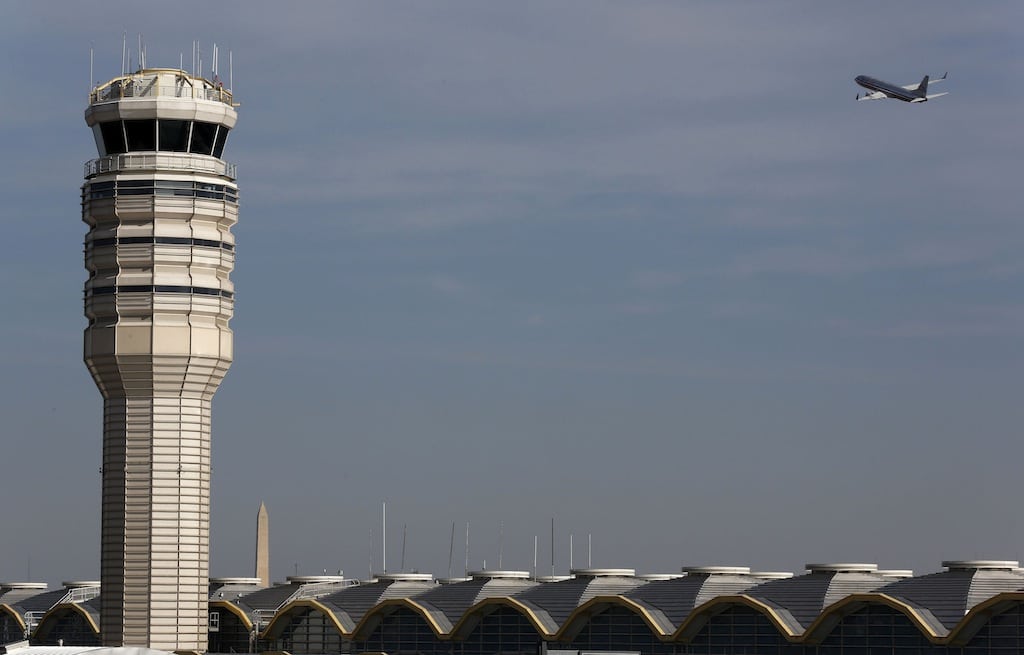Skift Take
Aviation safety will certainly be sacrificed if these furloughs stick, and summer travel could be a mess.
Flight delays of up to 3-1/2 hours are expected at some busy U.S. airports this summer because of furloughs of air-traffic controllers, the top U.S. aviation regulator warned on Thursday.
The estimate from the Federal Aviation Administration is the first to detail, in minutes and hours, the potential delays from the agency’s decision to furlough 10 percent of its staff, starting Sunday, as it struggles to meet budget cuts required under so-called sequestration.
Other groups, including the air-traffic controller’s union, have warned of potentially long delays and reduced capacity to handle airplanes, which could force airlines to cut flights.
But in contrast to those warnings, the FAA estimates were based on complex models that took into account different runways and tower configurations at numerous busy airports.
The average delay would be much shorter than 3-1/2 hours, and ranges widely depending on the airport, FAA administrator Michael Huerta said in a briefing to reporters.
Huerta and Transportation Secretary Ray LaHood appeared at a hastily arranged news conference at Transportation Department headquarters on Thursday, vowing to ensure the continued safety of U.S. air travel despite the budget constraints.
“Safety will never be compromised in anything we do,” LaHood told reporters.
The meeting, however, underscored their frustration about having to furlough 47,000 FAA staff, close smaller air traffic control towers and inconvenience the flying public.
“We have looked far and wide at everything to make the reductions. We’ve looked at every contract. We’ve looked at every way possible to make reductions, but we cannot avoid furloughs, ” LaHood said.
By running a series of complex computer models, the FAA determined which airports would be most affected by the sequestration-caused delays, Huerta said.
New York’s John F. Kennedy airport, for instance, could see maximum delays of 50 minutes and average delays of 12.4 minutes. The airport is a important hub for Delta Air Lines, which plans to open a refurbished terminal in May.
In contrast, Atlanta’s airport — the nation’s busiest — could see maximum delays of up to 210 minutes and average delays of 11.3 minutes.
Chicago’s O’Hare airport, also a busy hub, could see delays of up to 132 minutes, with average delays of 50.4 minutes, Huerta said.
Chicago’s situation was particularly challenging because one runway would have to be shut if staffing levels made it impossible to operate both control towers at the airport, Huerta said. Air traffic controllers in Atlanta also have said that they might need to close a runway because of the furloughs.
Other airports to be affected by delays included Fort Lauderdale, San Diego, Philadelphia, Charlotte, Miami and Chicago’s Midway airport, Huerta said.
It is unclear what ripple effect the delays would have on the whole air traffic network, which also includes international flights.
Air-traffic controller staffing has drawn attention in recent weeks after the FAA said it would close control towers at 149 small airports across the country, starting on June 15. Congress has asked for safety studies of those plans, but the FAA has so far not provided them.
At a hearing on Thursday, Senator Jerry Moran, a Kansas Republican, questioned Huerta sharply about his decision to close towers and asked for studies from? the FAA on the safety effect of closing the small airports.
The furloughs at big airports, meanwhile, are slated to start on Sunday. But the effects will probably be felt early in the week, Huerta said. The impact on the overall network would probably become more apparent over the next week or two.
Paul Rinaldi, president of the Air Traffic Controllers Association, the union representing tower workers, said it is still unclear how much capacity will be cut at airports.
“It could be really, really bad for the airlines if this continues on because we just won’t be able to run the amount of aircraft that are out there,” Rinaldi said in an interview.
With airlines running full jets, the ability to move passengers to empty seats on other planes is limited, he added.
The FAA will try to soften the furlough effects. “But reduced staffing will slow down our ability to keep the system moving as efficiently as possible,” LaHood said. “We will allow only the number of aircraft we can safely manage to fly. Safety is not up for negotiations during sequestration.”
He said the delays could be worsened by thunderstorms or equipment outages.
(Reporting by Andrea Shala-Esa; Additional reporting by Alwyn Scott; Editing by Gary Hill, Sofina Mirza-Reid and Alden Bentley)
![]()
The Daily Newsletter
Our daily coverage of the global travel industry. Written by editors and analysts from across Skift’s brands.
Have a confidential tip for Skift? Get in touch
Tags: faa, flight delays, sequester
Photo credit: A jet departs Washington's Reagan National Airport next to the control tower outside Washington, in this February 25, 2013 file photo. Larry Downing
